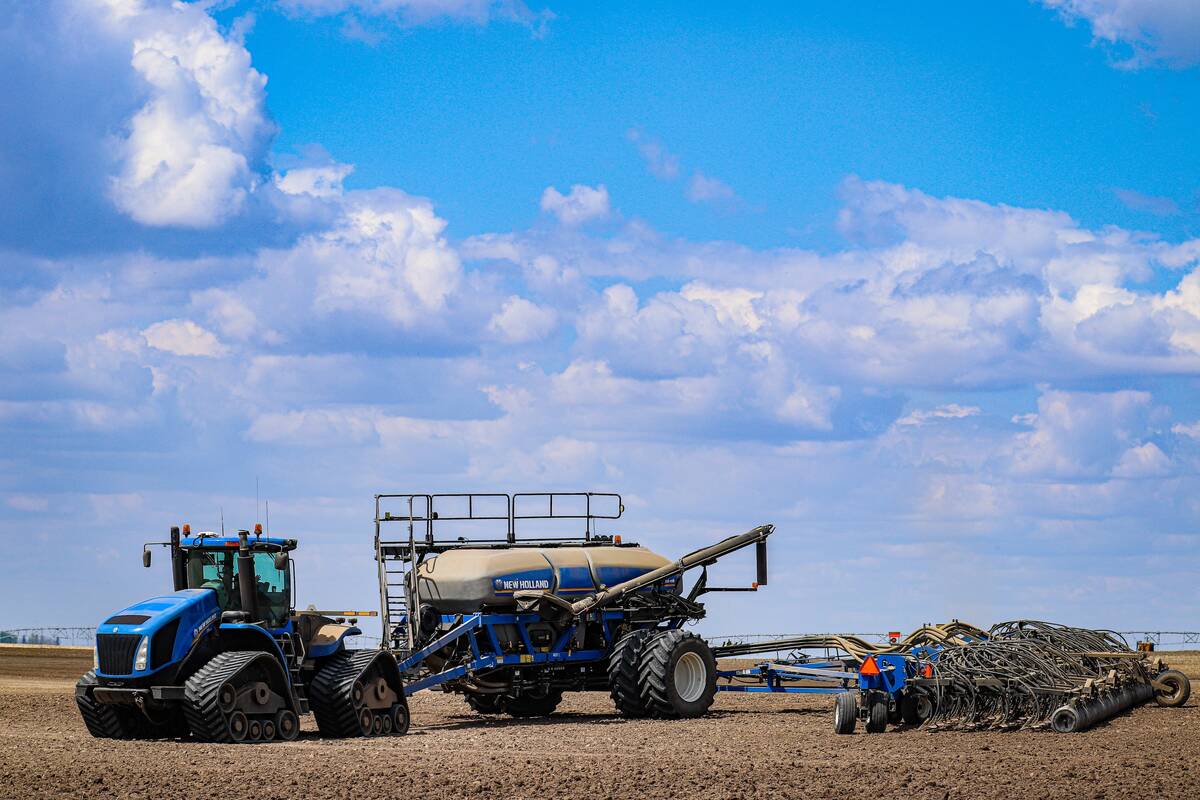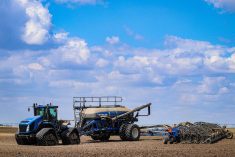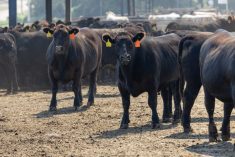If you believe the message from Ottawa, then you probably believe that Western Canada’s grain supply chain is working well.
Prairie grain is flowing to export position at a near-record pace, and Canada’s major railways are consistently meeting the million-tonne-per-week targets that Ottawa put in place earlier this year.
However, that is cold comfort for Saskatchewan grain grower Glynis Oliver, who farms with her husband, Chris, near Speers, Sask.
Earlier this year, the Olivers contracted three rail cars of wheat to CWB.
The couple was told that their producer cars would be delivered in mid-June to a loading site at Hamlin, Sask., — roughly 70 kilometres away — where grain growers can load their own grain onto railcars and avoid elevation fees.
Read Also

NFU says proposed plant breeders’ rights come at farmers’ expense
The National Farmers Union is pushing back against changes to the Plant Breeders’ Rights Act that would narrow the scope of farmers’ right to save seed or propagate crops from cuttings and tubers.
Today, almost five months later and more than a year after the Olivers’ harvested the grain, the hopper cars still haven’t arrived.
“It’s a gong show,” said Oliver.
“Nobody can tell you when the cars are coming. And when cars do arrive, nobody seems to know who they belong to. Nobody can tell you anything.”
Sensing a breakdown in the producer car delivery system, the Olivers have since attempted to deliver some of their CWB-contracted grain to elevator companies with facilities in North Battleford, Sask.
No luck.
Despite the fact that CWB has — or at least had — commercial grain handling agreements with competing elevator companies such as Cargill, Viterra, P&H and Pioneer, none of the companies would agree to take delivery of the Olivers’ grain.
Each company offered a slightly different explanation, but the end result was the same: no delivery opportunities for CWB grain.
Because of delivery problems, CWB has allowed some producers in the North Battleford area to back out of delivery contracts and sell their grain to competing grain companies.
Remi Gosselin, a spokesperson for the Canadian Grain Commission, said his organization is working with Canada’s major railway companies to ensure the timely delivery of producer cars.
Gosselin said the demand for producer cars increased dramatically in early 2014.
“Last year, I think we had 21,000 producer car orders, the likes of which had not been seen in recent memory,” he said.
Of those 21,000, approximately 16,000 orders were sent to Canadian National Railway and Canadian Pacific Railway. However, it is not clear how many of those cars have been delivered.
Gosselin said the grain commission has no control over when producer cars are spotted in the countryside.
CGC is responsible for processing producer car applications and sending orders to the major railway companies, a process known as allocation.
However, it has no say in when allocated cars are actually spotted or delivered to producer car sites.
Nor does CGC track the difference between the number of cars allocated or ordered and the number of cars delivered to producers.
“We only track the number of cars that … are ordered,” Gosselin said.
“What I can certainly say, though, is that we’re working with the railways to address the backlog and that means improving the allocation process and seeking information on (the status) of producer cars. But in terms of spotting, again, the CGC is not in control of those cars.”
In an Oct. 28 email to the Western Producer, CN’s director of communications and public affairs Mark Hallman said CN’s key grain supply chains in Western Canada are back in sync after a difficult winter.
CN has been working closely with grain customers and the Canadian Grain Commission (CGC) to make sure all market segments receive proper service, he added.
“During the 2013-14 crop year, CN spotted over 5,000 cars at CGC producer car sites on CN and CN-served short lines,” Hallman wrote.
“So far, CN has spotted nearly 1,700 CGC producer cars in the first three months of 2014-15.”
Hallman said producer cars have accounted for two to three percent of CN’s record-setting grain car spots over the past 15 months, in line with the company’s average.
Hallman’s email went on to explain that grain car orders in CN’s Order Book that are “not yet planned for supply and service are carried forward as pending order requests in what is termed “waitlist” status, for review in the next week’s planning cycle.”
During the 2013-14 crop year, CN’s waitlist grew throughout the fall and winter, eventually peaking in early April.
Since then, the numbers have declined.
“The number of CGC producer car orders waitlisted from 2013-14 has fallen from around 3,500 in mid-June to about 200 currently, the majority of which are concentrated at a few loading sites with limited car spot capacity that require multiple weeks of full-spot train operations to serve,” Hallman’s email said.
“CN has been working with the CGC, the party responsible for placing producer car orders, in order to serve waitlisted CGC producer car orders, and to improve the CGC’s management of the producer car ordering process so as to avoid the accumulation of orders at loading sites with limited car spotting capacity and to improve the CGC’s visibility of CN’s producer car service plans.”
As of last week, Oliver had no idea when her cars would be arriving.
Other farmers she knows are still waiting on cars that were supposed to arrive in February.
The systems used to track the status of individual cars have been of little help, she added.
“We’re told to check the CN website every Friday … and type in the platform ID number and the order reference number that we’ve been provided for each car,” she said.
“Every week it tells you the same thing: shortfall.”
Inquiries to CN’s producer car hotline have also failed to provide useful information on the status of her cars.
“I’ve been told so many times that we’re next on the list … I just don’t believe it any more,” she said.
“Two or three producer cars don’t matter to CN. Obviously, they’re going to want to deliver 100-car trains to main-line locations because it’s … the easiest way to make money off moving that grain.
“I don’t know what kind of a carrot or a stick you’d have to use to get them to come out to our more remote locations.”
Statistics provided by the grain commission show that it has handled nearly 11,600 producer car applications since Aug. 1.
That number includes nearly 3,500 car orders submitted to major railway companies, 6,700 car orders that have been processed but have yet to be sent to railways and 1,400 applications that have been cancelled, rejected or are pending acceptance.

















